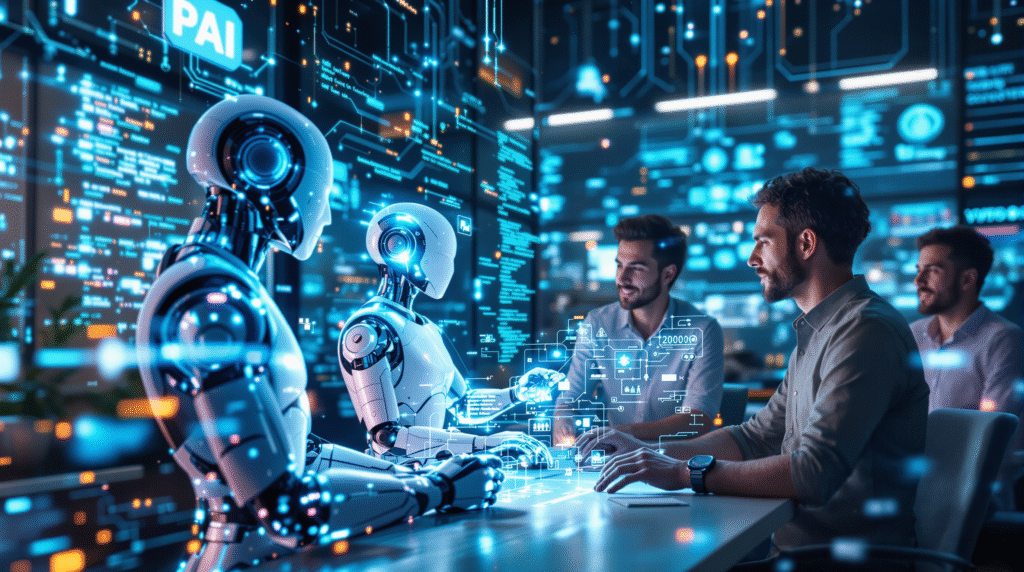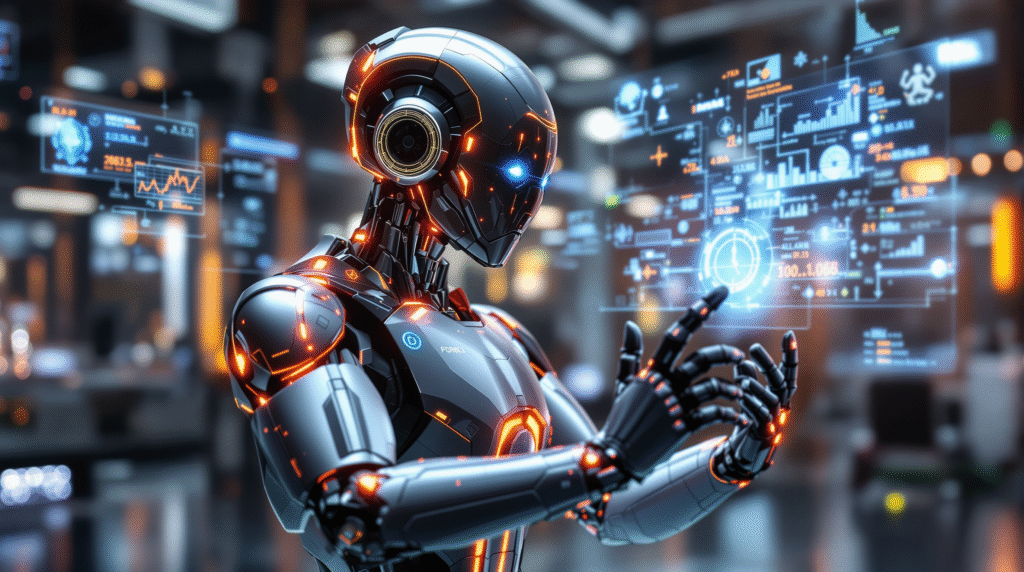Introduction: The Dawn of the AI Agent Era
The world of software development is undergoing a profound transformation. The emergence of AI agents marks a new chapter in how we design, build, and maintain digital solutions. Unlike traditional software, which relies on explicit instructions and static logic, AI agents are capable of learning, adapting, and making decisions autonomously. This shift is not just a technological upgrade—it represents a fundamental change in the philosophy of programming.
AI agents are already making their presence felt across various industries. From automating repetitive tasks to providing intelligent recommendations and even collaborating with human teams, these agents are redefining what is possible in software engineering. As organizations seek greater efficiency, flexibility, and innovation, the adoption of AI agents is becoming a strategic priority. For developers, this means new opportunities to create smarter, more responsive applications—and a chance to shape the future of technology.
What Are AI Agents? Key Concepts and Definitions
An AI agent is a software entity that perceives its environment, processes information, and takes actions to achieve specific goals. Unlike traditional programs, which follow predefined rules, AI agents can analyze data, learn from experience, and adapt their behavior over time. This makes them particularly well-suited for complex, dynamic environments where flexibility and autonomy are essential.
Key characteristics of AI agents include autonomy, the ability to operate without constant human intervention; adaptability, which allows them to improve performance based on feedback; and proactivity, meaning they can initiate actions rather than simply respond to commands. AI agents often leverage technologies such as machine learning, natural language processing, and computer vision to interpret data and interact with users or other systems.
In practice, AI agents can take many forms. Some act as digital assistants, helping users manage schedules or answer questions. Others operate behind the scenes, optimizing logistics, monitoring systems, or detecting anomalies. As the technology matures, the line between human and machine collaboration continues to blur, opening up new possibilities for innovation in software development.
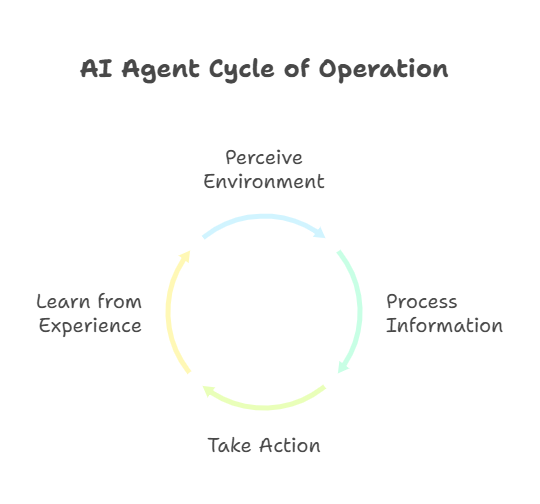
The Evolution of Software Development: From Manual Coding to Intelligent Agents
Software development has always been a field driven by innovation and the pursuit of greater efficiency. In the early days, programmers wrote every line of code by hand, meticulously defining each function and process. As systems grew more complex, new paradigms emerged—object-oriented programming, modular design, and frameworks that accelerated development and improved code quality. However, even with these advances, traditional software remained fundamentally rule-based and static.
The rise of artificial intelligence has introduced a new paradigm: intelligent agents capable of learning and adapting. Instead of relying solely on explicit instructions, developers can now build systems that analyze data, recognize patterns, and make decisions autonomously. This shift is particularly evident in areas such as automation, data analysis, and user interaction, where AI agents can handle tasks that were previously too complex or time-consuming for conventional software.
Today, the integration of AI agents into development workflows is changing the very nature of programming. Developers are no longer just coders—they are becoming architects of intelligent systems, designing environments where agents can learn, collaborate, and evolve. This evolution is opening up new possibilities for innovation, allowing teams to tackle challenges that were once out of reach.
Architectures and Technologies Behind AI Agents
The effectiveness of AI agents depends on the underlying architectures and technologies that power them. At the core, most AI agents are built on machine learning models, which enable them to process data, recognize patterns, and make predictions. Deep learning, a subset of machine learning, has been particularly influential, allowing agents to interpret complex data such as images, speech, and natural language.
Modern AI agents often use a combination of neural networks, reinforcement learning, and natural language processing to achieve their goals. For example, conversational agents rely on large language models to understand and generate human-like responses, while autonomous agents in robotics use reinforcement learning to navigate and interact with their environment.
The architecture of an AI agent typically includes several key components: a perception module to gather and interpret data from the environment, a decision-making module to evaluate options and select actions, and an action module to execute those decisions. Many agents also incorporate feedback loops, enabling them to learn from the outcomes of their actions and continuously improve over time.
Integrating AI Agents into Modern Development Workflows
The integration of AI agents into software development workflows is reshaping how teams approach projects, from planning to deployment and maintenance. Traditionally, development followed a linear process: requirements gathering, coding, testing, and release. With AI agents, this process becomes more dynamic and iterative. Agents can assist in automating repetitive tasks such as code reviews, bug detection, and even generating code snippets based on natural language descriptions. This not only accelerates development but also reduces the risk of human error.
AI agents are also being embedded into DevOps pipelines, where they monitor system performance, predict potential failures, and recommend optimizations in real time. In collaborative environments, agents can facilitate communication between team members, manage documentation, and ensure that best practices are followed throughout the project lifecycle. By integrating seamlessly with popular development tools and platforms, AI agents empower developers to focus on creative problem-solving and innovation, while routine and time-consuming tasks are handled autonomously.
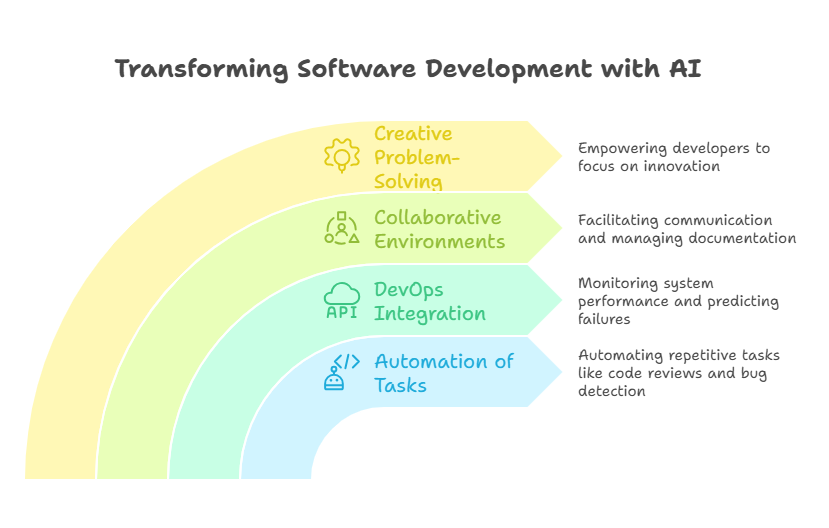
Real-World Use Cases: AI Agents in Action
The practical applications of AI agents in software development are already visible across the industry. In code generation, tools like GitHub Copilot use advanced language models to suggest code completions, refactor existing code, and even write entire functions based on brief descriptions. In quality assurance, AI-powered agents automatically identify bugs, suggest fixes, and prioritize issues based on their potential impact, streamlining the testing process.
In project management, intelligent agents analyze project data to forecast delivery timelines, allocate resources efficiently, and identify potential bottlenecks before they become critical. Customer support teams benefit from AI agents that handle routine inquiries, triage support tickets, and provide instant solutions, freeing up human agents for more complex cases. AI agents are also making a difference in cybersecurity, where they monitor network activity, detect anomalies, and respond to threats faster than traditional systems. In each of these scenarios, the common thread is the ability of AI agents to process vast amounts of data, learn from experience, and act autonomously—enabling organizations to build smarter, more resilient software solutions.
Benefits and Opportunities for Developers
AI agents are not just “nice-to-have” add-ons; they unlock tangible advantages that reshape a developer’s daily work and long-term career path.
7.1 Productivity on Steroids
• Automated code completion and refactoring accelerate feature delivery.
• Agents handle boilerplate (test scaffolds, documentation stubs), letting humans focus on business logic.
7.2 Higher Code Quality
• Continuous static analysis and style enforcement run in the background.
• Agents learn project conventions and flag deviations in real time, reducing post-merge rework.
7.3 Continuous Learning & Upskilling
• Developers get instant, contextual explanations of unfamiliar libraries or patterns.
• Feedback loops (agent suggestions ⇄ human confirmations) create a micro-learning environment.
7.4 New Roles and Specializations
Prompt-engineering, agent-orchestration, and AI-ops emerge as sought-after skills, broadening career trajectories beyond classic backend / frontend silos.
7.5 Democratization of Development
Low-code / no-code agents enable domain experts to prototype applications themselves, shrinking the gap between idea and implementation. Developers shift toward platform stewardship and governance.
Example: Let an LLM Agent Auto-Generate Unit Tests
python
import openai
import os, pathlib, textwrap
openai.api_key = os.getenv("OPENAI_API_KEY")
def generate_tests(py_file: str, model="gpt-4o-mini"):
"""Return a pytest-style test suite for a given Python source file."""
source = pathlib.Path(py_file).read_text()
prompt = textwrap.dedent(f"""
You are an expert Python tester.
Write concise pytest unit tests for the following module.
Only import pytest and the module under test.
Module code:
\"\"\"{source}\"\"\"
""")
response = openai.ChatCompletion.create(
model=model,
messages=[{"role": "user", "content": prompt}],
temperature=0.2,
)
return response.choices[0].message.content
if __name__ == "__main__":
tests = generate_tests("my_module.py")
pathlib.Path("test_my_module.py").write_text(tests)
print("✅ Generated tests to test_my_module.py")Place this script in your CI pipeline so every new PR ships with an auto-generated test scaffold reviewers can refine instead of writing from scratch.
Challenges and Risks in Adopting AI Agents
While the upside is compelling, uncritical adoption invites pitfalls.
8.1 Data Privacy & Security
Training or prompting agents on sensitive repositories can leak intellectual property or personal data through model outputs.
8.2 Bias, Hallucination, and Reliability
LLMs may introduce subtle bugs, biased recommendations, or confidently wrong answers (“hallucinations”) that slip through reviews.
8.3 Dependency & Skill Erosion
Over-reliance on agents may erode fundamental engineering skills and reduce team understanding of critical code paths.
8.4 Cost & Performance Overheads
Running multiple agents (IDE plug-ins, CI reviewers, monitoring bots) can inflate cloud bills and latency.
8.5 Regulatory and Licensing Uncertainty
Generated code may inadvertently reproduce copyrighted snippets; forthcoming regulations (EU AI Act, U.S. frameworks) could impose auditing duties.
Example: Pre-Training PII Scrubber to Mitigate Privacy Risk
python
import re
from pathlib import Path
PII_PATTERNS = {
"email": r"\b[A-Za-z0-9._%+-]+@[A-Za-z0-9.-]+\.[A-Z|a-z]{2,}\b",
"phone": r"\b(\+?\d{1,3}[-.\s]?)?(\d{3}[-.\s]?){2}\d{4}\b",
"ssn": r"\b\d{3}-\d{2}-\d{4}\b",
}
def scrub_pii(text: str) -> str:
for label, pattern in PII_PATTERNS.items():
text = re.sub(pattern, f"<{label}_removed>", text)
return text
def clean_dataset(path_in: str, path_out: str):
raw = Path(path_in).read_text()
cleaned = scrub_pii(raw)
Path(path_out).write_text(cleaned)
print(f"✅ Saved cleaned corpus to {path_out}")
if __name__ == "__main__":
clean_dataset("chat_logs.txt", "chat_logs_clean.txt")Run this script as a preprocessing step before feeding any proprietary logs into an AI-agent fine-tuning pipeline. Pair it with red-team evaluations and usage monitoring to further reduce privacy, bias, and security risks.
Best Practices for Building and Managing AI Agents
Successfully implementing AI agents in software development requires more than just technical know-how—it demands a thoughtful approach to design, deployment, and ongoing management. The first step is to clearly define the agent’s purpose and scope. Developers should identify specific tasks or workflows where an agent can add measurable value, such as automating code reviews, generating documentation, or monitoring system health.
Transparency and explainability are crucial. AI agents should provide clear reasoning for their actions and recommendations, making it easier for developers to trust and validate their outputs. Regular audits and performance monitoring help ensure that agents continue to operate as intended and adapt to changing project requirements. It’s also important to establish feedback loops, allowing human users to correct or refine agent behavior, which in turn improves the agent’s learning and effectiveness.
Security and privacy must be prioritized from the outset. Sensitive data should be anonymized or masked before being processed by AI agents, and access controls should be enforced to prevent unauthorized use. Developers should also stay informed about evolving regulations and best practices related to AI ethics, data protection, and intellectual property.
Finally, fostering a culture of collaboration between humans and AI agents is key. Teams should encourage experimentation, share lessons learned, and continuously refine their workflows to maximize the benefits of intelligent automation.
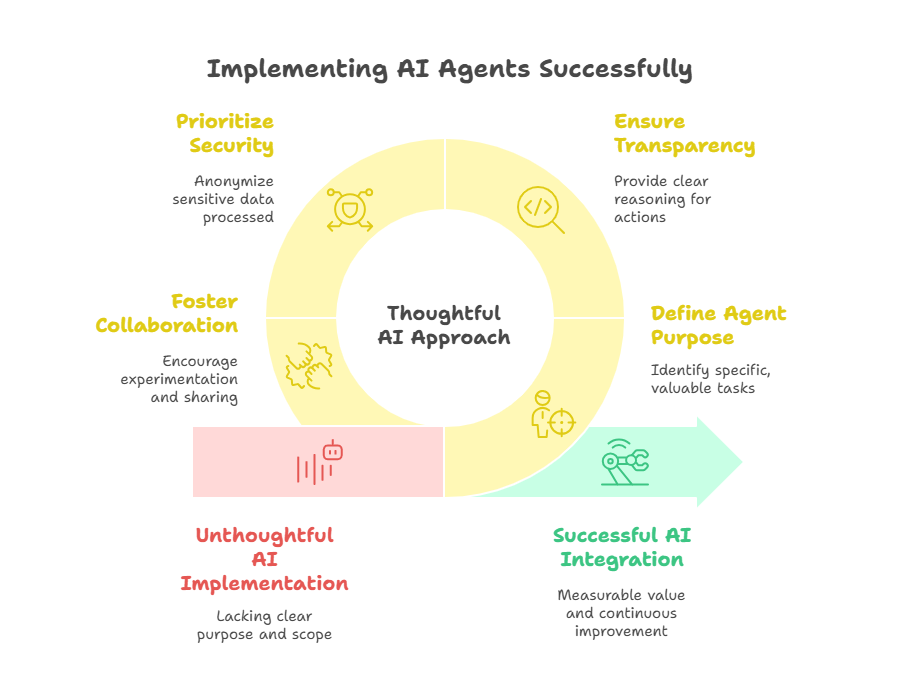
The Future of Programming: Human-AI Collaboration
The future of software development is not about humans versus machines, but about humans working alongside intelligent agents to achieve more than either could alone. As AI agents become more capable, their role will shift from simple automation tools to creative collaborators. Developers will increasingly focus on designing, orchestrating, and supervising agent-driven workflows, while agents handle routine coding, testing, and optimization tasks.
This collaboration will lead to new forms of creativity and problem-solving. Developers will be able to prototype ideas faster, explore alternative solutions, and iterate on designs with unprecedented speed. AI agents will also help bridge the gap between technical and non-technical stakeholders, translating business requirements into working code or providing real-time insights during project discussions.
The rise of human-AI collaboration will also reshape the skills landscape. While traditional programming expertise will remain valuable, new competencies—such as prompt engineering, agent orchestration, and ethical oversight—will become increasingly important. Teams that embrace this shift and invest in continuous learning will be best positioned to harness the full potential of AI agents.
Conclusion: Embracing the AI Agent Revolution
The rise of AI agents marks a turning point in the history of software development. No longer limited to static, rule-based automation, today’s intelligent agents are capable of learning, adapting, and collaborating with humans in ways that were unimaginable just a few years ago. This revolution is not only changing how we write code, but also how we approach problem-solving, innovation, and teamwork.
For developers, the integration of AI agents offers a wealth of opportunities. Productivity is enhanced as agents take over repetitive or time-consuming tasks, freeing up human talent for more creative and strategic work. Code quality and project outcomes improve thanks to continuous monitoring, intelligent suggestions, and automated testing. At the same time, new roles and specializations are emerging, allowing developers to expand their skills and shape the future of their profession.
However, this transformation also brings new challenges. Issues of data privacy, security, and ethical responsibility must be addressed proactively. Teams need to adopt best practices for building, deploying, and managing AI agents, ensuring transparency, accountability, and ongoing human oversight. By fostering a culture of collaboration and continuous learning, organizations can maximize the benefits of AI while minimizing risks.
Quantum Programming with AI Agents: New Horizons in Computing
From Pull Request to Deployment: AI Agents in the Review Process
